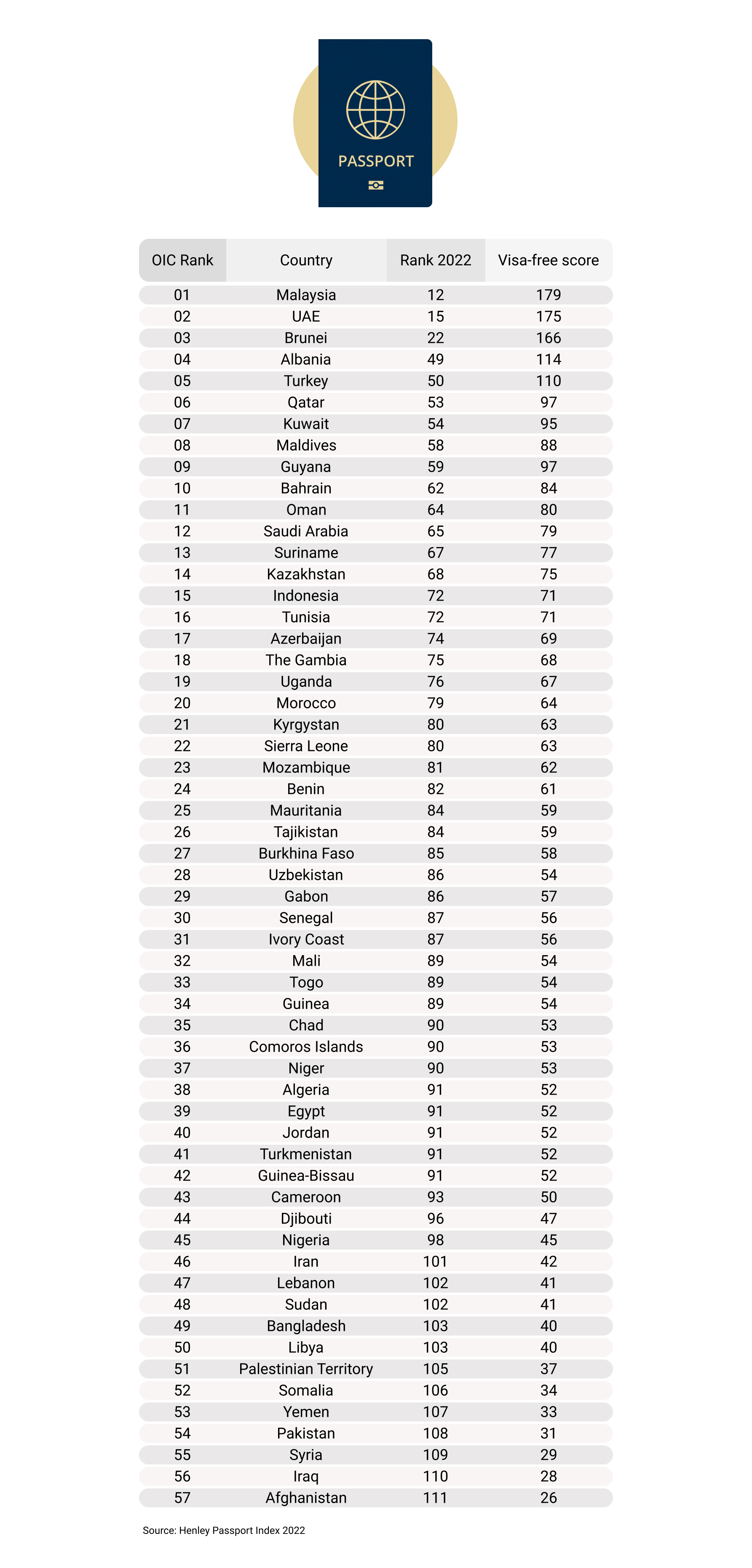91% of OIC citizens cannot travel to half of the world without a visa
Henley Passport Index shows a widening mobility gap. Citizens of just five OIC members states can travel to over 110 countries visa-free, while citizens of 14 OIC countries can travel to only a quarter of the planet.
Visa-free travel has increased for citizens of the world’s richest countries, reaching record-breaking levels this year, but the mobility gap has also widened. This is particularly apparent for most of the 57-member Organisation of Islamic Council (OIC) countries.
In the Henley Passport Index 2022, passport holders of the world’s top-ranking nations, Japan and Singapore, can now enter 192 destinations around the world visa-free – 166 more than Afghanistan, which is at the bottom of the index, ranked 111, with visa-free travel possible to just 26 countries.
The OIC countries dominated the lower rankings, accounting for 13 out of 18 countries ranked 101 to 111, with Iranians and Lebanese able to travel to 42 and 41 countries visa-free respectively, while the citizens of the very bottom five – Yemen, Pakistan, Syria, Iraq and Afghanistan – can visit fewer than 33 countries visa-free.
Out of the 196 countries worldwide, the citizens of 14 OIC countries can only travel to a quarter of the planet - 49 countries - visa-free. The top ranked OIC countries, Malaysia and the United Arab Emirates (UAE), can travel to around 90% of the world visa-free.
Overall, the citizens of 52 OIC countries – 91% of the Council’s members - cannot travel to half of the world without a visa. Just five have the possibility to travel to over 110 countries visa-free – Malaysia, UAE, Brunei, Albania and Turkey.

Henley & Partners noted that when the Index started in 2006, the average global citizen could visit 57 countries without needing a visa in advance. In 2022, that figure has nearly doubled, to 107 countries, “but this overall increase masks a growing disparity between countries in the global North and those in the global South, with nationals from countries such as Sweden and the USA able to visit more than 180 destinations visa-free, while passport holders from Angola, Cameroon, and Laos are able to enter only about 50.”
The travel divide was brought into stark relief last year during the spread of the Omicron COVID-19 variant, in which countries, mainly Southern African, were put on travel ban ‘red lists’. The UN Secretary General Antonio Guterres described this as being equivalent to “travel apartheid.”
© SalaamGateway.com 2021 All Rights Reserved
